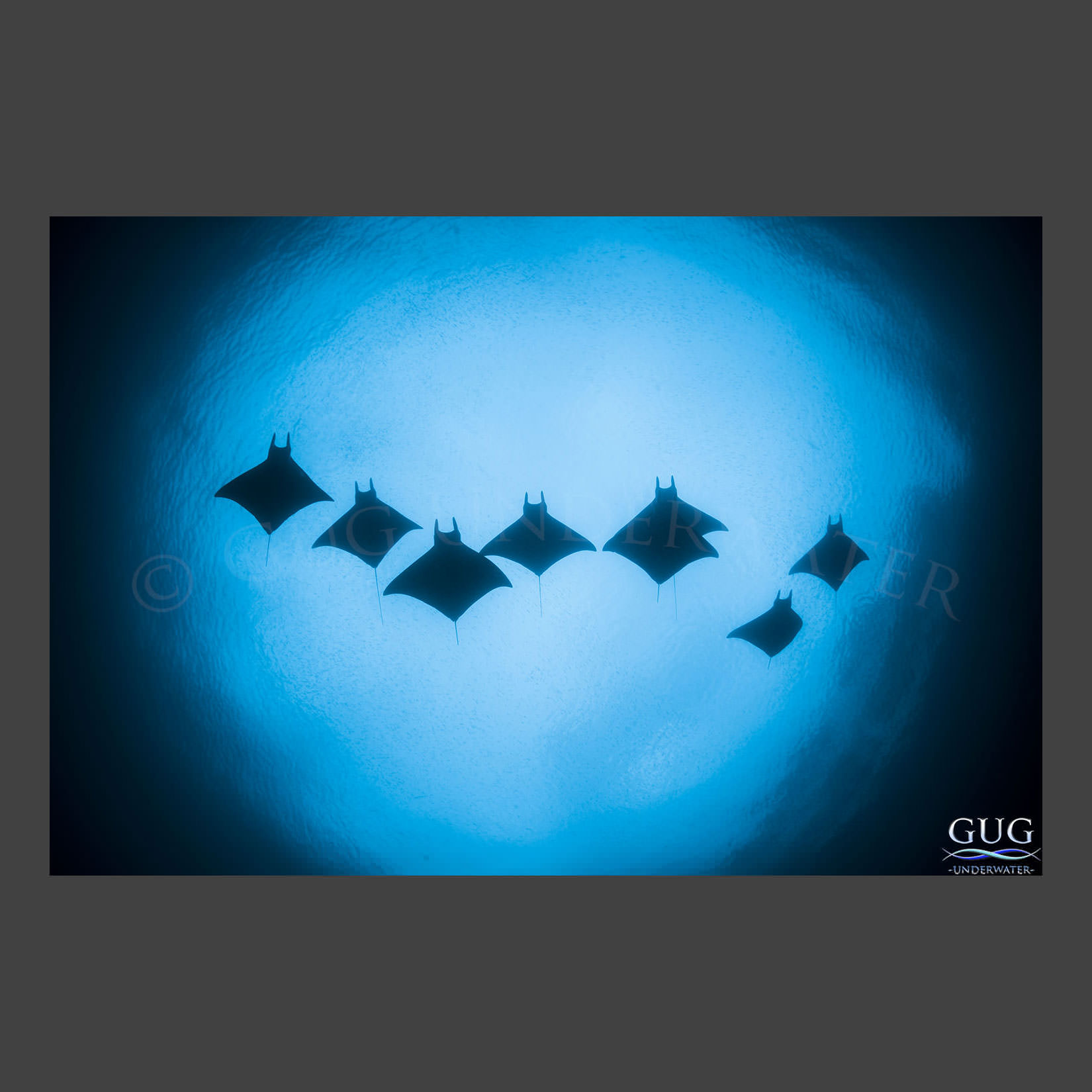Description
LOCATION: Papua New Guinea
STORY: I dislike answering the question of what’s your favorite dive spot?, simply because its so subjective. It’s like asking what’s the best vehicle? You might need a minivan to haul 4 kids, but I like my stupid-fast electric motorcycle by Zero. But if I reeeeeeally have to answer the question, my answer is such an obscure and inaccessible spot that it just leaves people wondering why they asked. That place is called Samarai (yes, I spelled that correctly) Wharf in Papua New Guinea. I’ve spent somewhere in the range of 80-100 hours underwater under that dilapidated wharf, marveling at the massive school of sardines, the batfish, the wobbegong sharks, and all the crazy tiny creatures in the muck of the seafloor.
On this day, however, it was time to throw the plan out the window, because a group of stealthy & speedy, yet elegant predators had unexpectedly stopped by. A squadron of mobula rays in perfect cooperative formation screamed passed, bursting through the school of sardines at seemingly impossible speed. And then they were gone. And about 80 seconds later, the exact same thing happened in the opposite direction. Soon, I realized this was a pattern, almost like clockwork. Mobula rays, being highly intelligent miniature mantas, were waiting out of sight, just long enough for the sardines to forget the danger and resume their foraging away from the shelter of the wharf. And just at that moment, they’d cooperatively rip through the school, each landing a mouthful. As I sat on the bottom at about 30′ deep, I realized my rising exhalation bubbles were impacting their hunting pattern (and getting in my shot). Since their pattern repeated every 80 seconds like clockwork, I simply took a deep breath at about 60 seconds to let my bubbles clear the scene before they arrived, so I could shoot straight up.
The circular “shadow” is an optical phenomenon known as “Snell’s Window”. It happens underwater when shooting upwards with an ultra-wide fisheye lens, because at the periphery of the frame, sunlight is passing through a much higher quantity of water than it is in the middle. Fisheye lenses are definitely more challenging to use, but the result on the compositional impact makes it my tool of choice in nearly every situation. Without the coral reef in the photo, we’re presented with a subdued palate – an artwork that blends into a décor, rather than commanding the room.
For similar color and feel, check out two of my other scenic colorful coral reef photographs: the award-winning Ancient Wharf, which is also an upward-facing shot showing the Samarai Wharf itself, and the jellyfish photo Skyfall. which has a similar compositional feel using Snell’s Window.
For printing, Squadron technically can be cropped away from it’s native ratio of 3:2 into panoramic art, but it’s not my preference, as you loose the circular effect of the Snells’s Window. It is available in large art sizes up to a maximum of 150″ wide. You can purchase this mobula manta ray wall art online in our standard sizes, but if you’d like to discuss a custom crop or size, please contact one of our design consultants at the art gallery.

